Choosing the Best Monitor for Eye Strain is the biggest challenge for you. There are two types of eye strain monitors available on the market first one is a flicker-free monitor and another is a low blue light screen monitor.
Our first priority is to focus on performance/display, resolution, eye-saving features/ergonomics, and the number of ports. With these features, you can easily able to use your eye strain monitor for any purpose, and you can also use it for a long time like up to 8 to 10 hours continuously without any headache or eye strain problem.
We observe from some past years there are a lot of people who work from home to earn their money. And they work on the computer screen for 8 to 10 hours continuously. Which is not an easy task. To reduce this problem of people we review the Best Monitor for Eye Strain.
Our all products are well manufactured according to the need of our customers. When you’re choosing a monitor for eye strain there are some things that must e in your mind. Like swivel, pivot, tilt, and height adjustment. These features will allow you to rotate your monitor in any position easily.
Top 10 Best Monitor for Eye Strain
Here are the Top 10 Best Monitor for Eye Strain. While purchasing a monitor, just invest in a good product that has all the features which are mentioned above. Always choose a monitor which does not strain your eyes.
| IMAGE | PRODUCT | DETAILS | CHECK PRICE |
|---|---|---|---|
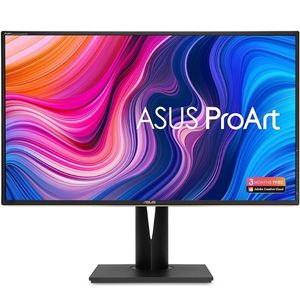 | ASUS ProArt PA329C | Screen Size: 32 Inches Response Time: 5ms Resolution: (3840 × 2160) pixels | |
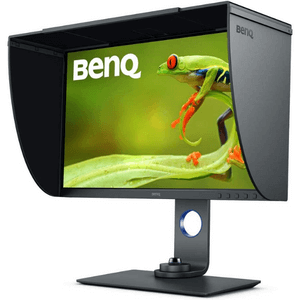 | BenQ SW270C | Screen Size: 27 Inches Response Time: 5ms Resolution: (2560 × 1440) pixels | |
 | SAMSUNG Odyssey G7 | Screen Size: 32 Inches Response Time: 1ms Resolution: (2560 × 1440) pixels | |
 | ASUS (PB278Q) | Screen Size: 27 Inches Response Time: 5ms Resolution: (2560 × 1440) pixels | |
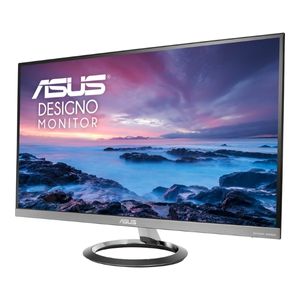 | ASUS Designo (MZ27AQL) | Screen Size: 27 Inches Response Time: 5ms Resolution: (2560 × 1440) pixels | |
 | ViewSonic VX2457-MHD | Screen Size: 24 Inches Response Time: 2ms Resolution: (1920 × 1080) pixels | |
 | BenQ ZOWIE XL2411P | Screen Size: 24 Inches Response Time: 1ms Resolution: (1920 × 1080) pixels | |
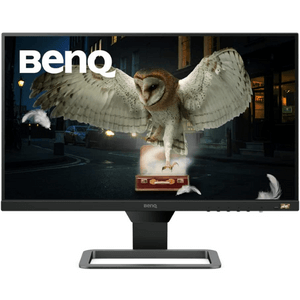 | BenQ EW2780 | Screen Size: 27 Inches Response Time: 5ms Resolution: (1920 × 1080) pixels | |
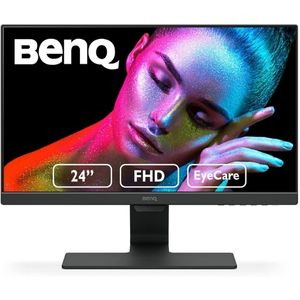 | BenQ GW2480 | Screen Size: 23.8 Inches Response Time: 5ms Resolution: (1920 × 1080) pixels | |
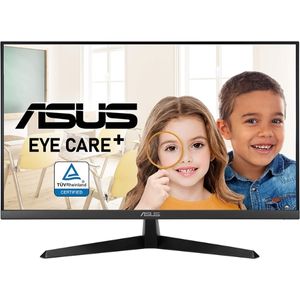 | ASUS VY279HE | Screen Size: 27 Inches Response Time: 1ms Resolution: (1920 × 1080) pixels |
1. ASUS ProArt PA329C – Best ASUS Eye Care Monitor

An advanced monitor, such as the ASUS ProArt PA329C, is ideal for professionals who require a high-quality viewing experience and eye-care technology. You get what you pay for when considering the monitor. It has an exceptionally sharp 4K UHD screen that outstrips its competitors in this matter.
The screen will have a truthful and vivid color palette thanks to its 100 Adobe RGB and 100 RGB True Color readouts. It supports 98 DCI-P3 and 84 rec. 2020 color palettes, so your projects can look as accurate as possible.
If you are not sure how to manipulate the monitor’s HDR curves and color gamut, you can select one of the ProArt presets with ASUS Smart HDR technology. The monitor provides a proper USB-C interface that you can use as a DisplayPort and for data transfers, and you can even use it as a charger since it has 60W of power delivery.
This monitor was built for professionals because you’ll get the ASUS QuickFit Virtual Scale that provides you an aerial image of your project on the screen, so you can accurately calibrate the expected size of it before you print it.
ASUS ensured that the monitor is designed to last long hours. Its flicker-free feature and low blue light filter help prevent various acute issues and eye strain. The monitor’s design is quite flexible because you can pivot, tilt, and swivel it and adjust its height.
The Picture-by-Picture and Picture-in-Picture modes available with the-within-captioning ProArt PA339C Display make it possible for users to display content from a DVD player and another source on the same monitor.
2. BenQ SW270C – Best 4K Monitor for Eye Strain

Professional creative work is performed on this monitor. Color reproduction is excellent, covering 99 percent of Adobe RGB, which extends beyond the SRGB color space. It comes with a detachable hood to prevent overhead lights from creating ugly glare that obscures the screen. The anti-glare screen fights off reflections on its own, but it’s also designed to reduce reflections on the screen. As well as being flicker-free, it is also very eye-friendly.
There is a hardware calibration chip inside this monitor, and it comes calibrated from the factory. By doing so, you can change the output of your graphics card without having to change the monitor’s color performance.
Blue light may be a concern for you if you are particularly sensitive to it. It aims to achieve the most accurate color possible, which is difficult to accomplish with blue-light reduction. Because the science on the effects of blue light, in general, isn’t totally settled, we typically recommend going with a high-quality monitor like this and keeping your usage to a minimum in order to avoid causing eye strain to yourself.
3. SAMSUNG Odyssey G7 – Best Curved Monitor for Eye Strain

If you’re looking for the best monitor to prevent eye strain, look no further than the Samsung Odyssey G7. It features a curved design that minimizes glare and provides a more immersive viewing experience. Plus, it comes with several built-in settings that optimize the display for comfortable viewing. Whether you’re working all day or gaming into the night, the Odyssey G7 is perfect for keeping your eyes healthy!
I’m so glad I decided to purchase the SAMSUNG Odyssey G7 monitor! After only a few days of use, my eye strain has noticeably decreased. The image quality is fantastic, and the colors are very accurate. I would highly recommend this monitor to anyone who is looking for relief from eye strain.
The G7 espousal of a big curved screen, such as that, is a significant upgrade over any sort of preexisting monitor you may have. The G7 curve is 1000 extra, which is active to support the contour of the human eye, giving you the flexibility to grasp the screen further along while preventing eyes we retrain along the way. Samsung was one of the pioneers of curved screen technology.
4. ASUS (PB278Q) – Best Monitor Size for Eye Strain

I have been using the ASUS PB278Q monitor for a while now, and it is the best monitor I have ever used for eye strain. The monitor has a 27-inch screen with a resolution of 2560×1440, which is great for reducing eye strain. The monitor also has a blue light filter that reduces the amount of blue light that is emitted from the screen, which is great for reducing eye strain.
We found this low-vision monitor QuickFit Virtual Scale as a whole to be ideal for people that have impaired vision. The system’s programmable prompts and a hotkey allow you to see and make modifications to image files on-screen in real-time.
In addition to Splendid Video Intelligence Technology, a second proprietary ASUS technology, Splendid Video Intelligence Technology, offers the installer eight preset modes for optimized color based on the type of media (e.g. scenery, reading, and darkness modes), all accessible via a hotkey. We think it’s helpful to creators looking for the ideal screen for graphic design.
5. ASUS Designo (MZ27AQL) – Best Computer Monitor for Eye Strain

The ASUS Designo MZ27AQL would be a delight for your eyes with its Eye Care technology. Its screen features a blue light filter and TUV Rhineland-certified flicker-free backlighting that reduces eyestrain.
The monitor’s ergonomic design can also help eliminate any neck and back pain because you have the option to swivel and angle the screen and adjust its height to stand. The ASUS Designo MZ27AQL has a 27-inch ultra-high-definition (WQHD) IPS widescreen display with a wide viewing angle.
For those who do not need a Bluetooth speaker at home since it comes with a 6-watt stereo speaker, this is certainly a great alternative to have one. ASUS Sonic Master and Harmon Kardon collaborated on the development of this speaker system.
The monitor’s minimalist metallic frame with a touch of icicle gold and an accompanying base to finish its stylish appearance make the monitor appeal to appeal anyone’s artwork. It will look excellent with modern workspaces of any kind. The computer screen has twin HDMI ports and one DisplayPort 1.2 port. It can still be improved because it has just a refresh rate of 60 Hz.
6. ViewSonic VX2457-MHD – Best Monitor for Eye Strain 2024

An excellent widescreen 24-inch LED display is known to handle a variety of functions quite well. High refresh rates and mobile movement play a factor in the display’s outstanding motion content. The IPS panel emphasizes color accuracy.
Gamers will especially enjoy a sweet-toned blue light filter that lowers eye fatigue over long play sessions, in addition to several presets for the optimal color palette based on game progress (e.g. first-person shooting and real-time strategy). In addition to its handsome, clear resolution and clean, flicker-free refresh, this model shows itself to be the best 1080p gaming monitor on the market.
Among the best ergonomics on the market is this system, which offers 5 forward- and 5 backward tilts. Finishing the connections affected by this horoscope are HDMI, DisplayPort, and VGA. The monitor’s design is a little flimsy, while the viewing angle isn’t adjustable.
7. BenQ ZOWIE XL2411P – Best Gaming Monitor for Eye Strain

If searching for a gaming TV will facilitate your ambitions of getting AMD relief, look into the BenQ ZOWIE XL2411P. Its 144 Hz refresh rate and 1 ms response time, as well as its flicker-free technology, will give you short-term relief from eye fatigue from the prolonged usage of gaming or working.
The monitor’s screen has a 24-inch, High-Definition resolution. It performs an excellent job rendering images at night, due to its Black Equalizer setting. It also allows manual adjustments for its Color Vibrance settings to give you the perfect hue and tone for your content.
You can focus more on your activities or games with this monitor since the screen’s LCD frame minimizes backlight reflection. You can also comfortably view whatever you’re watching due to having the monitor on a height-adjustable stand, and it can rotate swivel, and tilt.
The VESA-compliant design of BenQ’s PDP series allows it to be mounted on a VESA wall mount to create a more resourceful desk. The monitor comes with an HDMI port, a DisplayPort, a headphone jack, and dual-link DVI ports. BenQ offers a three-year warranty on its monitors.
8. BenQ EW2780 – Best BenQ Eye-Care Monitor

Almost everything else on this list is more than twice as expensive as this screen, which comes in under $200. This product offers some of the highest eye strain features despite its low price. As a result of dynamic lighting mode, the monitor adjusts its backlight according to how bright the room is. Therefore, when it gets dark in the afternoon, and you start editing, the monitor will automatically adjust to become darker.
Besides fighting glare, blue light, and flicker, it also promises Eye Care support. While this monitor’s color coverage isn’t great, it’s an IPS monitor, which means it will display consistent color and brightness across the screen. Calibration is also likely to be fairly reliable.
Even though the 1080p resolution is low, there should still be no problem rendering the text at 27 inches. Someone new to editing or seeking a second screen will find this to be a solid option. As ambient light changes in a room, the backlight adapts to match it.
9. BenQ GW2480 – Best Budget Monitor for Eye Strain

It’s great that you’re considering purchasing a BenQ GW2480 monitor. It has special eye-care technologies that make them highly recommended if you want a good-quality screen. Using the monitor for a long period does not result in eye strain thanks to its brightness intelligence adaptive technology that automatically changes the level of brightness of your screen to suit your preference.
You won’t strain your eyes as a result of its low blue light technology, and flicker-free technology ensures your eyesight will remain healthy. The Wall Windows 2480 features a 24-inch IPS display with a Full HD resolution and 250-nit peak brightness. The monitor features ultra-slim bezels and wide 178° viewing angles.
The thinness of this base will save you a heap of area, and you’ll never have to deal with a multitude of cables because the monitor includes a wall-mounted cable management system. If you prefer the monitor away from the desk, you can mount it using the VESA wall mounting cradle. This screen is a good choice for newcomers, but experts may not like how its refresh rate is only 60 cycles per second. We also wish the screen had a more ergonomic look and feel.
10. ASUS VY279HE – Best Monitor Color for Eye Strain

The ASUS Eye Care monitor has a 27-inch Full HD screen and includes features specifically designed to improve your comfort and viewing enjoyment by reducing eye strain and making the monitor itself less sensitive to viewing angles. A comfortable ergonomic design, anti-glare surface, and 75Hz refresh rate with AMD Sync technology mean the screen’s visuals appear sharp and clear from virtually any direction.
Buyers who have difficulty recognizing certain colors may wish to make use of the color augmentation mode feature of their own TV set. TV sets certified by the Rheinland institute and low blue light technology help to reduce high-energy blue-violet emissions, making watching TV comfortable and easy regardless of your visual acuity. Additionally, a Rest Reminder function helps you avoid extended periods of sitting.
How to Select Best Monitor for Eye Strain – Buying Guide
In determining the best monitor to buy, we explored screen size, image quality, energy-saving features, ergonomics, and the port situation. Opt for a minimum 4K resolution monitor that is optimal for eye problems.
Our top eye-strain monitors feature custom-made screen technologies along with intuitive designs to lessen discomfort and keep you impactful. Pick displays with IPS touchscreens along with proprietary technology like ASUS Eye Care Technology and basic ones like flicker-free and low blue light filtering strategy to put less pressure on your eyes and maintain productivity.
Additionally, ergonomics also reflect the capability to make reasonable adjustments in the workplace. providing a specific screen height adjustment, as an example, BenQ is known for its Ultra-Flexible Height Adjustment System, which can adjust Dell Cinema monitors to fit in any available space. VESA-compatible back panels also come with fastening patterns for simple wall mounting, which can help to save desktop space.
The right number of HDMI ports should be fulfilled in order to accommodate an array of external devices. Choose a monitor, ideally, that features two HDMI 2.0 inputs, a built-in USB hub, and a DisplayPort. Prolonging the life of your monitor is also connected with household proper care. Read How to Clean Computer Memory? to learn how to maximize the lifespan of your monitor.
The Most Important Features to Consider
Performance
We recommend selecting the best monitor to facilitate eye strain with a Full HD resolution, which will allow you to adequately view a wide color gamut and a sharp image. You also have the option to choose 4K resolution, which quadruples the number of pixels of 1080p screens.
Ergonomics
Flicker-free technology and low blue light filtering are both essential in minimizing eye strain and increasing read times. Extended exposure to blue light contributes to oxidative stress in the retinas if you’re not careful. Also review the specs of eye care monitors, especially those with heavy swivel, tilt, pivot, and height adjustability, so you can find one that will enable you to view the screen from multiple seating positions, which can help reduce eye fatigue over time.
Number of Ports
Seek out the best display for eye strain with a minimum number of ports. Preferably, select one HDMI port, DP connector, and a built-in USB hub to help make your tablet more established.

